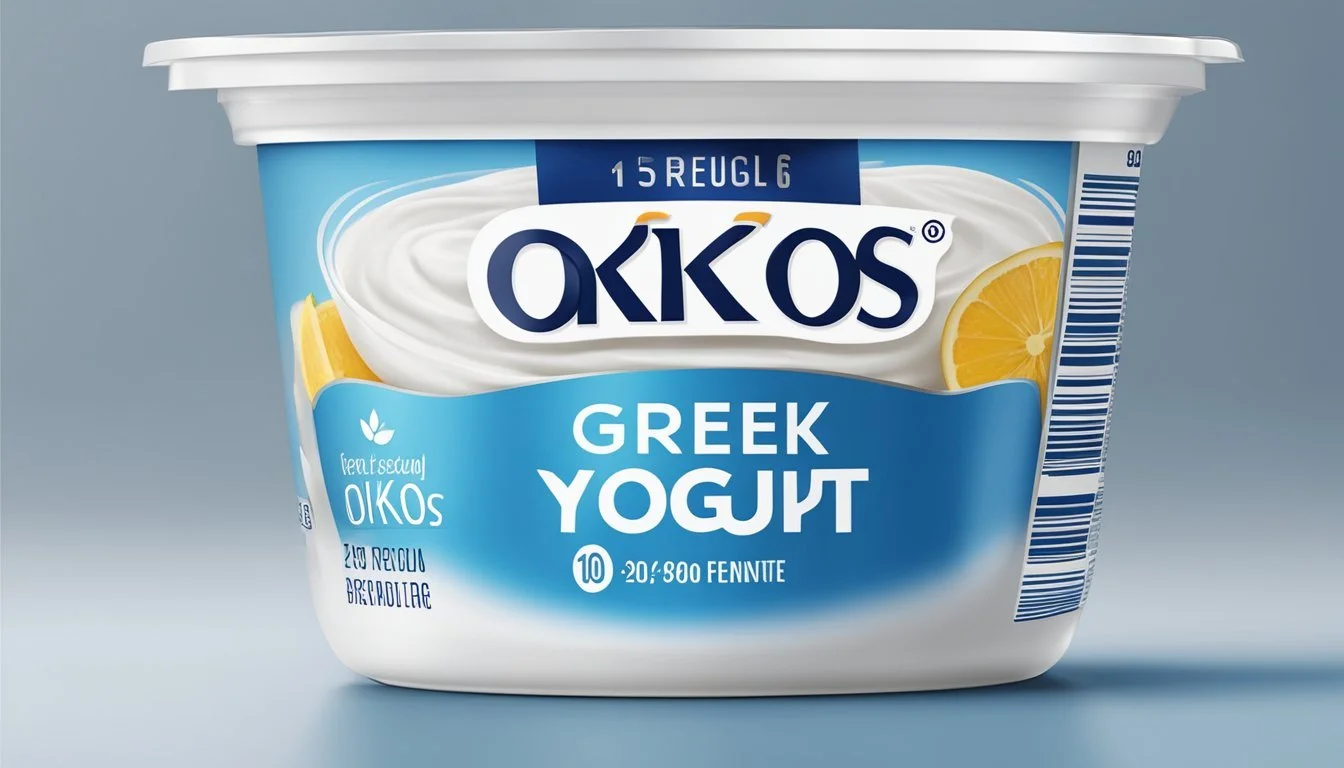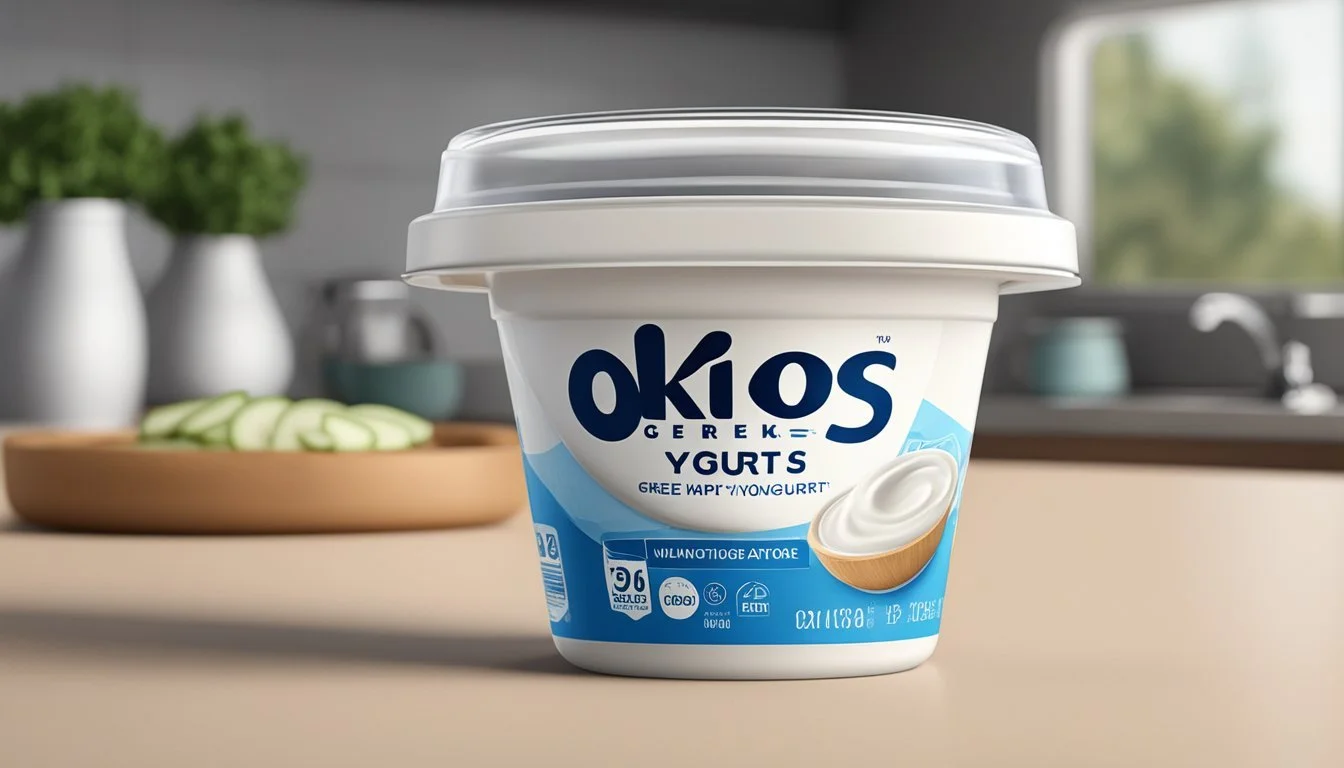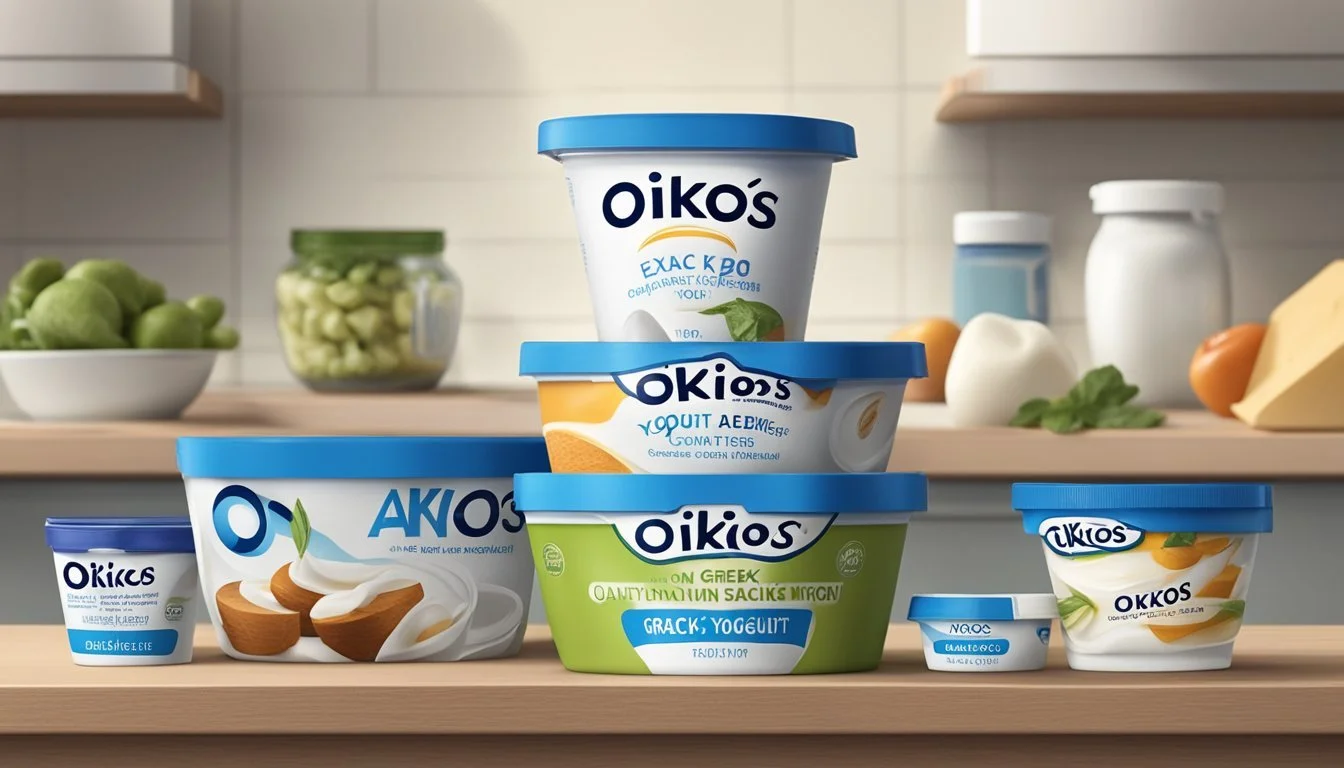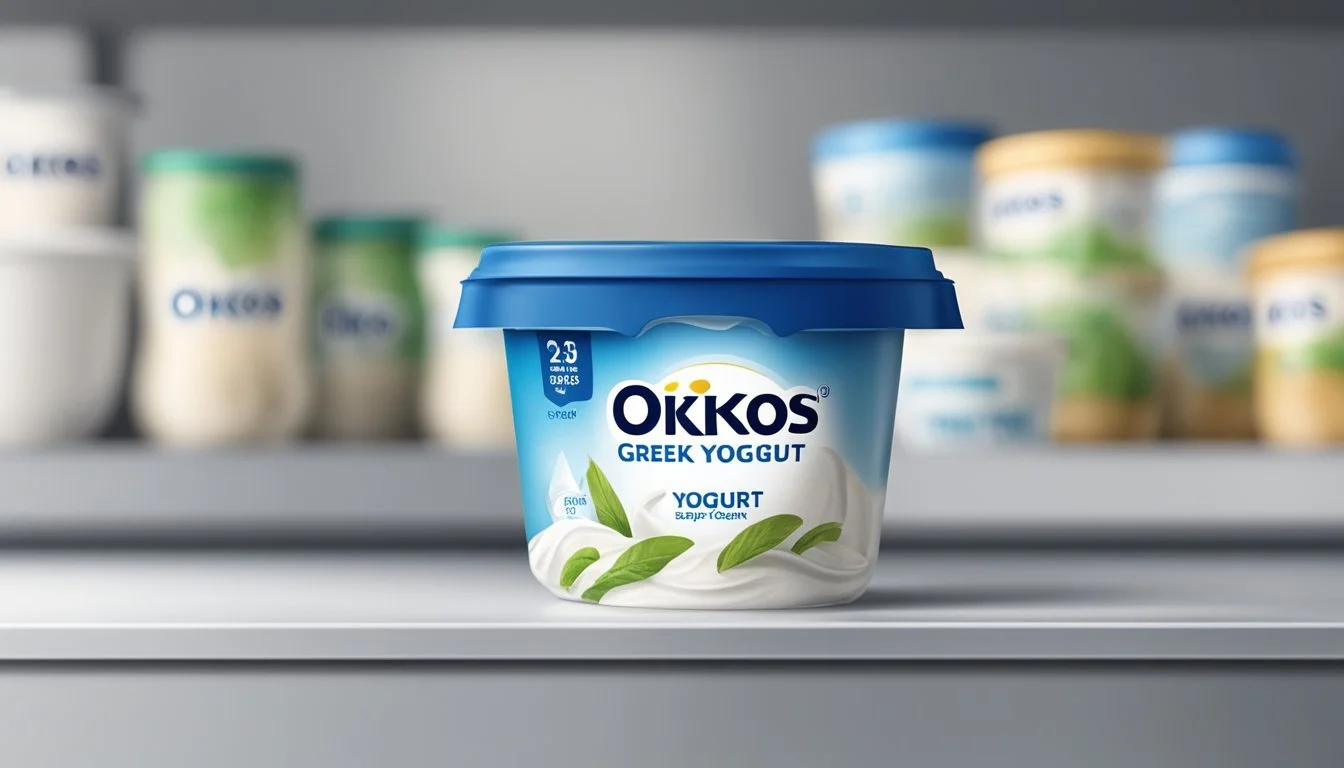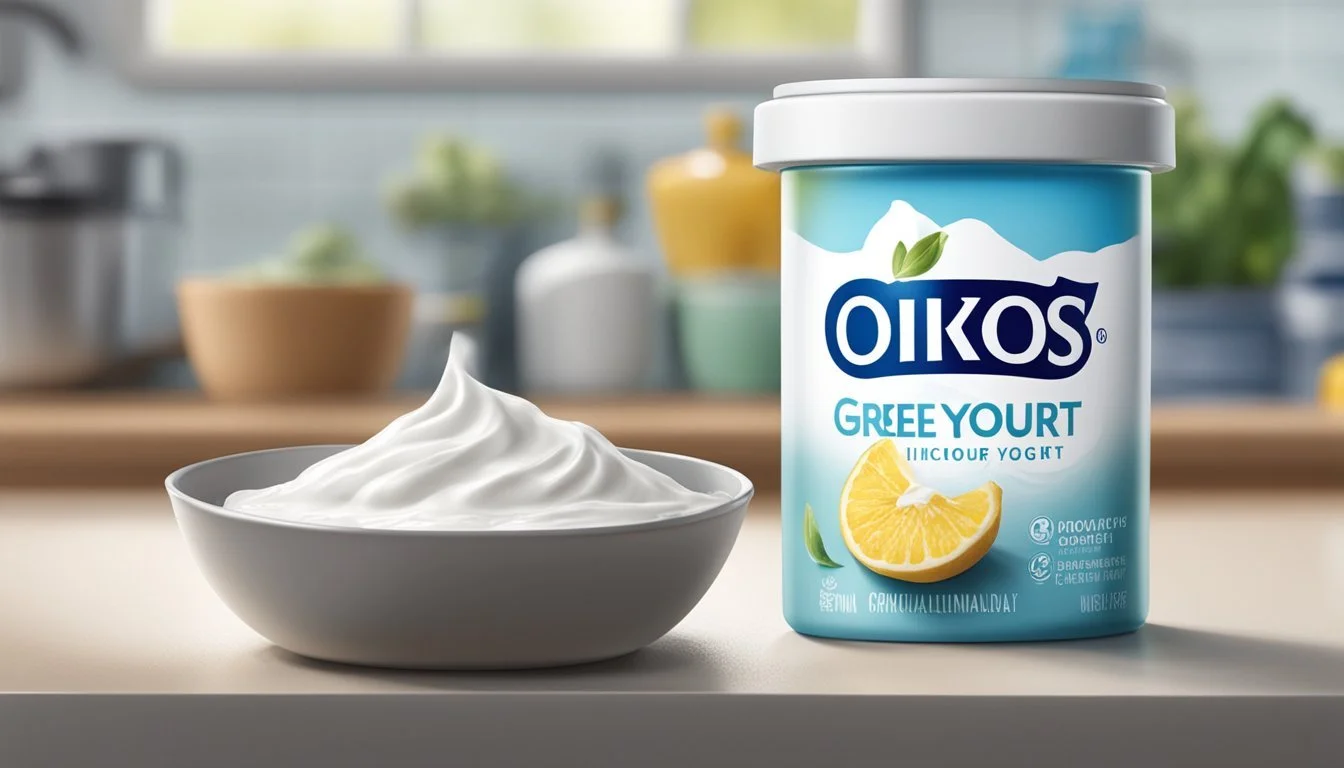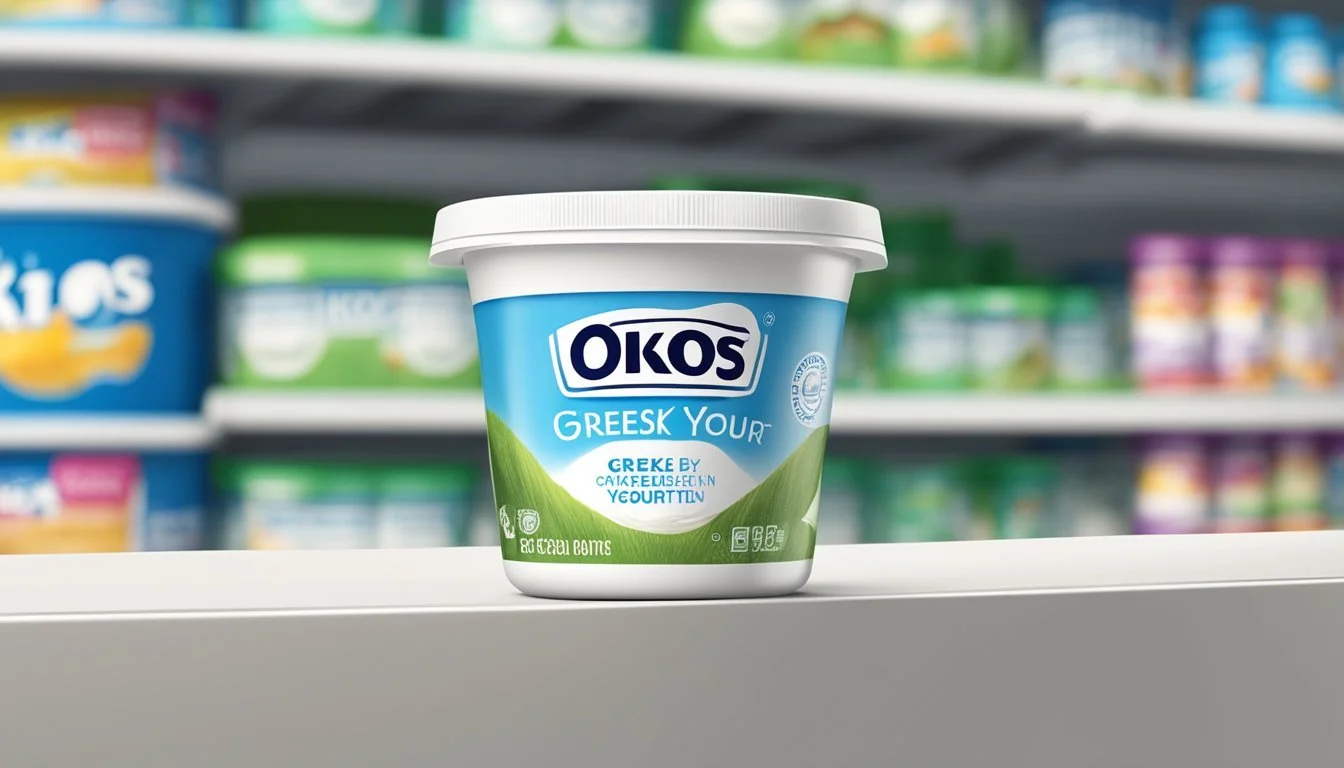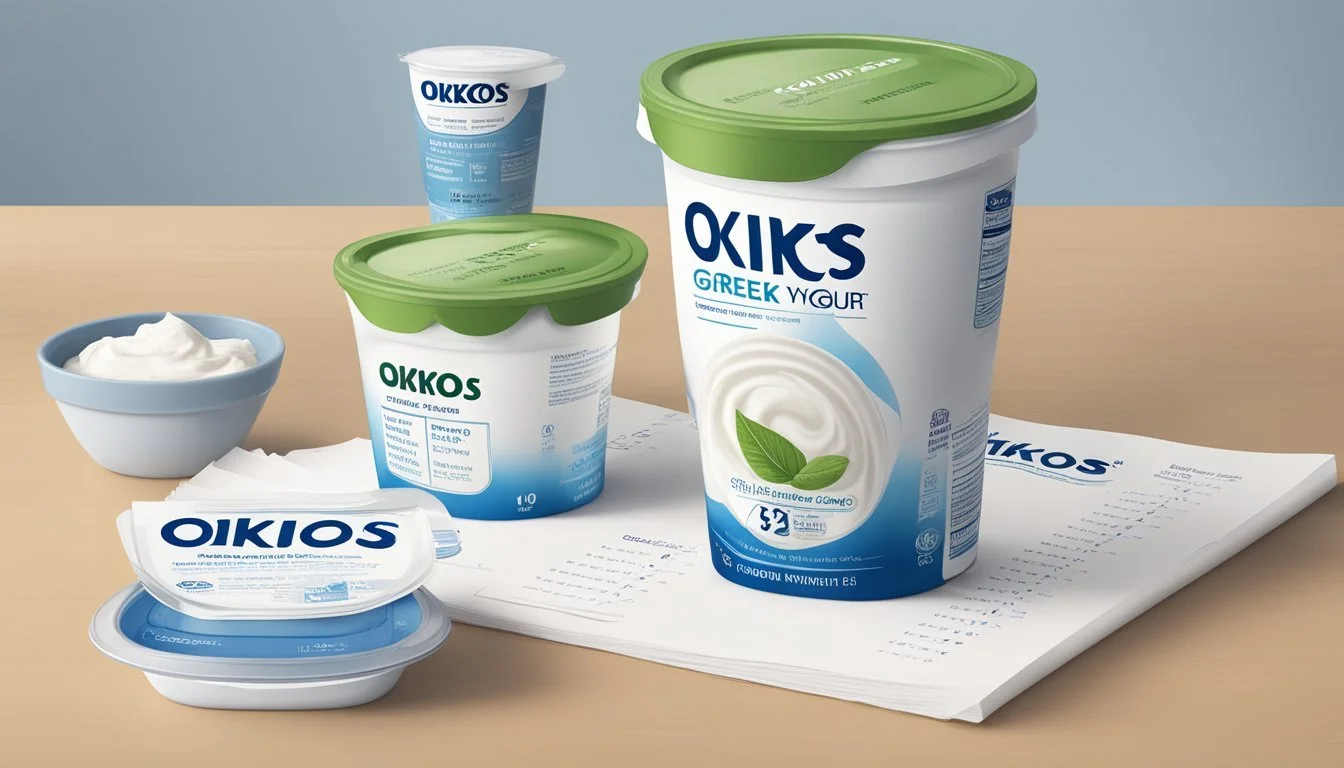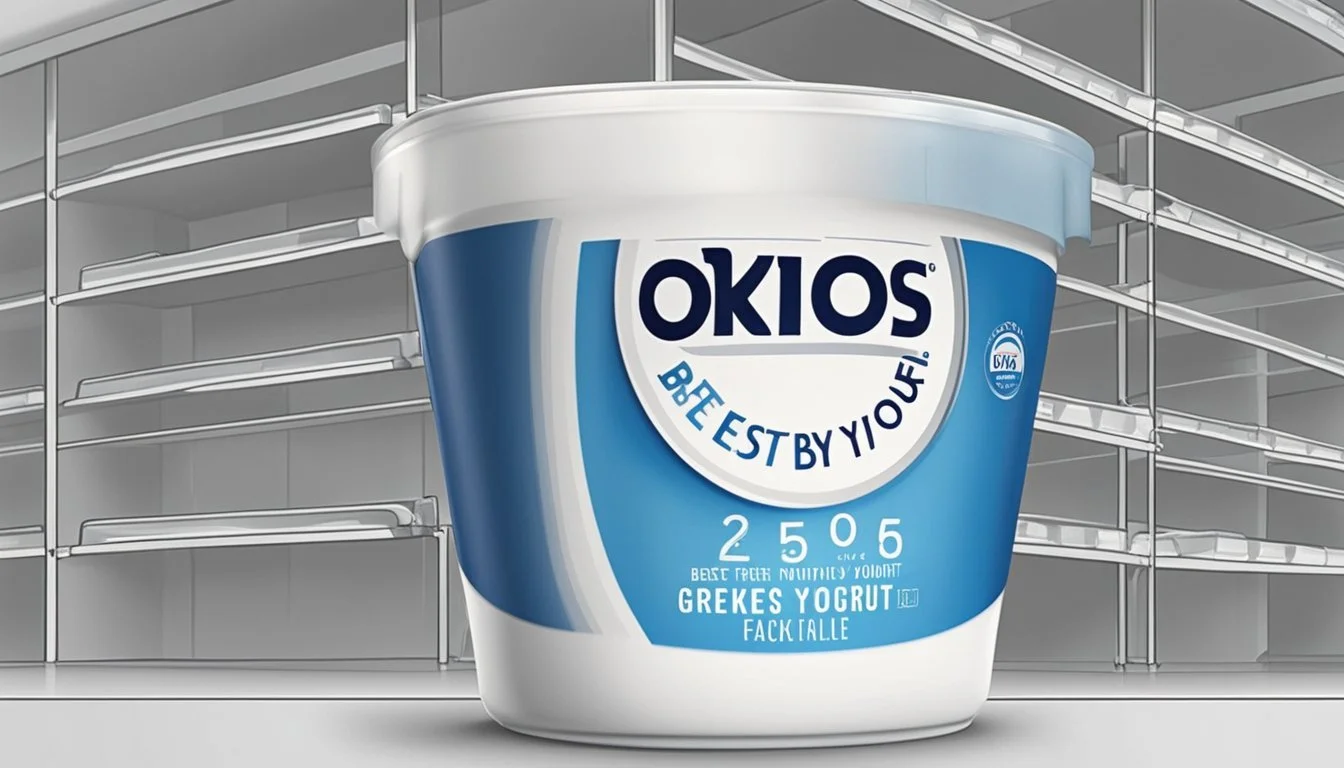How Long Does Oikos Greek Yogurt Last?
Shelf Life and Storage Tips
When assessing the shelf life of Oikos Greek yogurt, consumers often consider the "best by" date as a definitive guide. However, these dates are indicators of peak quality rather than safety limits. Oikos Greek yogurt, similar to other Greek yogurt varieties, can last about one month from the purchase date, assuming proper refrigeration. It is important to consume the yogurt before any listed expiration date to enjoy it at its best.
Refrigeration at or below 40 degrees Fahrenheit is crucial for preserving the freshness of Greek yogurt. Once opened, Greek yogurt's exposure to temperature fluctuations should be minimized to extend its lifespan. It's recommended to store the opened yogurt in the refrigerator and consume it within one to two weeks to ensure quality and safety.
Understanding Greek Yogurt
Greek yogurt differentiates itself from traditional yogurt with its thicker texture and higher protein content, making it a versatile and nutritious dairy product.
Defining Greek Yogurt
Greek yogurt, often known as strained yogurt, is a dairy product where the yogurt has been strained to remove most of its whey, resulting in a thicker texture than traditional unstrained yogurt. This straining process concentrates the yogurt's components, which not only enhances its texture but also its flavor.
Nutritional Profile
Greek yogurt boasts a robust nutritional profile. It is particularly high in protein, which is crucial for muscle repair and growth. This dairy product typically contains approximately twice the protein found in regular yogurt. Below is a table highlighting the key nutritional components of Greek yogurt per 100-gram serving:
Nutrient Value Protein 10g (approx.) Carbohydrates 4g (approx.) Fat 5g (full-fat variety approx.) Calcium 110mg (approx.)
The actual nutritional content can vary depending on whether the Greek yogurt is non-fat, low-fat, or full-fat. Additionally, Greek yogurt is known for its versatility. It can be used in various dishes, ranging from breakfast parfaits to dips and marinades, demonstrating its adaptability in both sweet and savory contexts.
Shelf Life Fundamentals
The shelf life of Oikos Greek yogurt is influenced by several factors including expiration date, storage conditions, and packaging. Understanding these can help consumers determine the optimal consumption period.
Expiry Framework
Expiration Date: Oikos Greek yogurt containers are marked with an expiration date, indicating the last day for peak quality as determined by the manufacturer. It typically reflects a date by which one should consume the yogurt while it's still at its best.
Use-By: This date is related to food safety, often seen on perishable items like yogurt. One should consume the product by this date.
Sell-By: This date tells the retailer how long the product can be displayed for sale. This is not a safety date but rather a guide for inventory management.
Determining Freshness
Consumers can judge the freshness of their yogurt by assessing several factors:
Appearance: The yogurt should be free of mold and have a consistent texture.
Smell: The yogurt should have a pleasant, tangy aroma typical of fresh Greek yogurt.
Texture: The texture should be creamy and smooth, without any noticeable separation or liquid pooling on the surface.
Storage Insights
When it comes to extending the shelf life of Oikos Greek yogurt, proper refrigeration and freezing techniques play a critical role in maintaining its quality and edibility.
Optimal Refrigeration
To maximize the freshness of Oikos Greek yogurt, it should be stored in a refrigerator at temperatures between 35°F to 40°F. Upon opening, the yogurt can retain its quality for up to two weeks when kept at this constant, cool temperature in an airtight container to prevent the growth of bacteria. It is essential that the yogurt is not left at room temperature for more than two hours, or one hour if the ambient temperature is 90°F or higher.
Freezing Recommendations
For longer storage, Oikos Greek yogurt can be stored in a freezer at 0°F or below. The yogurt can be kept for up to two months in these conditions.
Before Freezing: Transfer the yogurt to an airtight container or freeze it in its original packaging.
After Freezing: Expect a change in texture upon thawing, as freezing can affect the creamy consistency of Greek yogurt. Frozen yogurt is best used in cooking or baking, rather than consumed on its own.
Use these storage methods to help ensure your Oikos Greek yogurt remains a delicious and healthy addition to your meals.
Safety and Consumption
When considering the consumption of Oikos Greek yogurt, food safety and the recognition of spoilage signs are paramount. Consumers should be informed on how to identify whether yogurt remains safe to eat and understand the indicators of quality and potential spoilage to prevent illness.
Safe Eating Practices
Oikos Greek yogurt usually comes with a “Best If Used By/Before” date rather than an expiration date. This label indicates when a product is expected to be at its peak quality. It can be safe to consume the yogurt up to two weeks past this date if it has been stored correctly. Below are key points to ensure safe consumption:
Storage: Refrigerate promptly and keep at a consistent temperature of 40°F (4°C) or below.
Seal: Ensure the yogurt is properly sealed to prevent contamination.
Visual Inspection: Before consumption, check that the packaging is not damaged or bloated.
Signs of Spoilage
Identifying signs of spoiled yogurt is essential to avoid the risk of foodborne illness. Here are specific indicators:
Smell: A sour or unusual odor is a strong indication that the yogurt is no longer safe to consume.
Texture: Look for excess water, which may be a sign of separation, and any lumps that suggest spoilage.
Mold: The presence of mold on the surface means the yogurt has spoiled and should be discarded immediately.
By adhering to these safety practices and being vigilant for signs of spoiling, consumers can confidently enjoy Oikos Greek yogurt while minimizing the risk of foodborne illnesses.
Utilizing Yogurt Beyond Its Prime
When Oikos Greek yogurt approaches or passes its printed expiration date, it still may have a variety of uses in the kitchen, provided it has been stored properly and shows no signs of spoilage. This versatility helps in reducing food waste and maximizing the yogurt's value.
Culinary Uses
Oikos Greek yogurt that has gone past its expiration date but remains free from spoilage can serve several culinary purposes. One can incorporate it into baked goods as a substitute for higher-fat ingredients like butter or oil, offering a moist texture and a protein boost. It also makes an excellent base for smoothies, providing thickness and enhancing the drink with its tart flavor.
Recipes for Dips: Using Greek yogurt as a foundation, one can create a variety of dips. Yogurt imparts a creamy texture that's ideal for both savory and sweet options.
Salad Dressings: It can be whisked into salad dressings for a tangy twist, making the salad more flavorful while keeping it healthy.
Sauces: Incorporating yogurt into sauces can improve their consistency, adding a creamy dimension without overwhelming other ingredients.
Food Waste Prevention
By repurposing Oikos Greek yogurt in the kitchen, consumers can contribute to food waste prevention. Instead of discarding yogurt that's past its peak, it can be utilized effectively in cooking:
Assess the Quality: Confirm that the yogurt is free from mold and off smells.
Act Fast: Once the yogurt is identified as still good to use, incorporate it into recipes promptly.
Storage: If the yogurt can't be used immediately, freezing is an option to extend its usability for future culinary applications.
Using Oikos Greek yogurt beyond its expiration date when it is still safe to eat is not only economical but also benefits the environment by reducing unnecessary waste.
Symptoms of Spoiled Yogurt
When inspecting Oikos Greek yogurt for spoilage, one should look out for several tell-tale signs. First and foremost is the presence of mold. Mold can manifest as spots or fuzzy growths of various colors, and any visible mold indicates the yogurt should be discarded immediately.
The next indicator is the smell. Fresh yogurt has a pleasantly tangy scent, but if the yogurt emits a sour or rancid odor, it is a sign of spoilage. A bad smell can precede visible mold and should be considered a reliable red flag.
The taste of the yogurt is also a critical factor. Although tasting should be done with caution, yogurt that has an unusually sour or unpleasant flavor may indicate spoilage. It is recommended to taste only a tiny amount if the smell and appearance haven't raised suspicions.
Texture changes are additional symptoms to watch for. Oikos Greek yogurt is known for its smooth and creamy consistency. If it appears lumpy or has become excessively watery, this could signal that the yogurt is past its prime.
Spoiled yogurt consumption can lead to foodborne illnesses, which might result in symptoms such as nausea, vomiting, diarrhea, and other gastrointestinal distress. It is critical to err on the side of caution and discard any yogurt that exhibits any of the above spoilage signs to prevent potential illness.
Recognizing Spoilage Factors
When assessing whether Oikos Greek yogurt has spoiled, one should consider visual changes and the presence of microbial growth. These indicators are reliable markers to determine the freshness of the product.
Visual and Textural Indicators
Color Changes: Oikos Greek yogurt should maintain its creamy white hue. Discoloration can suggest spoilage. Be vigilant for any pink, green, or yellow tinges, which are indicative of bacterial growth or contamination.
Texture Alterations: Fresh Greek yogurt exhibits a smooth, consistent texture. If one encounters lumps or curdled consistency, it typically signifies that the yogurt is no longer suitable for consumption.
Microbial Growth Considerations
Mold and Yeast: Users should inspect the yogurt for mold, which can appear as spots or fuzzy patches on the surface. They can be of various colors, including green, black, or white. Even small amounts of mold suggest the entire container should be discarded.
Bacteria: Although not always visible to the naked eye, certain bacteria can cause significant changes in scent and taste. If the yogurt emits an off-putting odor or has a sour taste, it may be contaminated with harmful germs, indicating that it should not be consumed.
Handling and Preventing Contamination
When it comes to Oikos Greek yogurt, ensuring food safety through adequate handling, and preventing contamination are critical steps to prevent foodborne illness.
Proper Yogurt Handling
Storage: Oikos Greek yogurt should be stored in the refrigerator at or below 40°F immediately after purchase. It's important that the yogurt is kept sealed until use to maintain freshness and prevent contamination.
Serving Utensils: Always use a clean spoon when serving the yogurt to avoid introducing bacteria. One should never “double-dip” with a spoon that has been used for eating, as this can introduce bacteria from the mouth back into the yogurt container, increasing the risk of contamination.
Contamination Risks
Cross-Contamination: To prevent cross-contamination, one should not place Oikos Greek yogurt in direct contact with raw meats or eggs in the refrigerator. Specialists in food safety stress the importance of segregating dairy products from raw produce and meats.
Vulnerable Populations: Particular care should be taken when serving Oikos Greek yogurt to vulnerable populations such as children, pregnant women, and immunocompromised individuals, as they are at a higher risk for experiencing severe consequences from foodborne illnesses.
Informed Practices for Yogurt Longevity
Optimizing the shelf life of yogurt hinges on understanding the crucial relationship between temperature and time, as well as employing effective storage techniques. The following insights will focus specifically on how to best preserve Oikos Greek yogurt.
Time-Temperature Equation
Oikos Greek yogurt, much like other dairy products, has a preservation threshold influenced by time and temperature. When sealed, it is generally safe to consume for two weeks beyond its printed date, as long as it's stored properly in the refrigerator at or below 40 degrees Fahrenheit. After opening, the shelf life reduces to 7-10 days, with the understanding that the storage conditions remain consistently cold.
Important Temperature Note: Any temperature above 40 degrees increases the risk of spoilage.
Storage Condition Expected Freshness for Unopened Yogurt Expected Freshness for Opened Yogurt Refrigerator (≤40°F) Up to 2 weeks after the date on label 7-10 days Refrigerator (>40°F) Risk of spoilage increases Risk of spoilage increases
Expert Tips for Storage
To maximize the longevity of Oikos Greek yogurt and ensure its safety, here are concise yet effective storage recommendations:
Immediately after purchase: Refrigerate the yogurt at consistent temperatures.
After opening: Tightly seal the container to prevent the introduction of bacteria and other contaminants.
Avoid cross-contamination: Use clean utensils every time the yogurt is served.
By adhering to these specific guidelines, one can maintain the freshness and safety of their yogurt, effectively minimizing waste and ensuring its best quality until consumption.
Legal and Advisory Information
When considering the shelf life of Oikos Greek yogurt, it's essential to acknowledge the relevant legal and regulatory standards. Federal law in the United States does not mandate expiration dates on food products, with the exception of infant formula. Instead, manufacturers often provide a "Best If Used By/Before" or "Use-By" date to indicate peak product quality.
The USDA offers general guidance on dairy products' shelf life. It endorses the FoodKeeper App, which is a useful resource for consumers to gain insights into storage methods and anticipated shelf life of various products, including Greek yogurt.
Oikos Greek yogurt labels typically present the expiration date, as advised by the manufacturer, on the container's lid. This date is established to inform consumers of the timeframe in which the product is expected to maintain its optimal taste and texture.
Consumers should note:
A "Use-By" date refers to the last day a manufacturer guarantees the product's peak quality.
A "Best If Used By/Before" date suggests that the yogurt is still edible post this date, but flavor or texture might decline.
The USDA recommends consuming opened yogurt within one to two weeks, stored at a proper refrigeration temperature of 40 degrees Fahrenheit or below.
Additionally, subscribers to the USDA newsletter can receive updates on food safety and storage practices.
In summary, while "use-by" dates serve as a guideline for consuming Oikos Greek yogurt at its best quality, they are not a definitive marker for safety. Proper storage conditions are a critical factor in extending the yogurt's edible period beyond the printed date.
Detailed Usage Guidelines
Oikos Greek yogurt serves as a versatile ingredient for meals beyond its expiration date when stored correctly. Its unique properties allow for culinary creativity, provided its flavor and texture are preserved well.
Creating Delicious Meal Add-Ons
Oikos Greek yogurt works splendidly as an add-on to a variety of meals. When contemplating breakfast, one might consider a bowl of granola with a dollop of Greek yogurt, adding both creaminess and a tangy flavor. For a nutritious snack, pair this yogurt with fresh fruit slices to capitalize on its natural tartness without the need for added sugar.
Granola
Greek Yogurt
Honey (optional)
Fresh Berries
Snack Pairing:
Greek Yogurt
Sliced Apples or Pears
A sprinkle of Cinnamon
Flavor Enhancement Techniques
Greek yogurt can elevate the taste of various dishes. Its creamy texture can enhance smoothies, providing a protein-rich base that complements fruits like berries or bananas. Moreover, its ability to ferment can introduce subtle complexity to marinades and dressings.
Smoothie Recipe:
1 cup Greek Yogurt
1 banana
1/2 cup Berries
1 tablespoon Honey (optional)
Ice cubes
The fermentation aspect of Greek yogurt ensures that, even as it sits beyond its expiration date, when used thoughtfully in preparation, it imparts a depth of flavor that can distinguish a dish. Always be sure to check the consistency and scent of the yogurt before use to ensure it is still of good quality.
Beyond Consumption
When considering Oikos Greek yogurt, its value extends beyond simple consumption. It's not only a versatile food item but also holds potential in various alternative applications and cultural practices.
Alternative Applications
Oikos Greek yogurt can be employed imaginatively across a range of scenarios. Instead of discarding yogurt that is nearing the end of its shelf life, individuals may use it as a facial mask, owing to its lactic acid content, which can act as a gentle exfoliant. For home gardeners, mixing yogurt with water can create a probiotic-rich fertilizer for plants. There's also an increasing trend of incorporating yogurt into newsletters and other media dedicated to wellness, where it is often featured in DIY beauty and health remedies.
Cultural and Medicinal Uses
Within various cultures, Greek yogurt has a standing as a medicinal food. It's commonly seen as a home remedy to alleviate vomit and nausea due to its soothing texture and cooling effect. In traditional medicine, the probiotics found in Greek yogurt are acknowledged for contributing to gut health. In wellness circles, sharing these medicinal benefits is popular in wellness newsletters and holistic health platforms, solidifying yogurt's role in healthful living.

